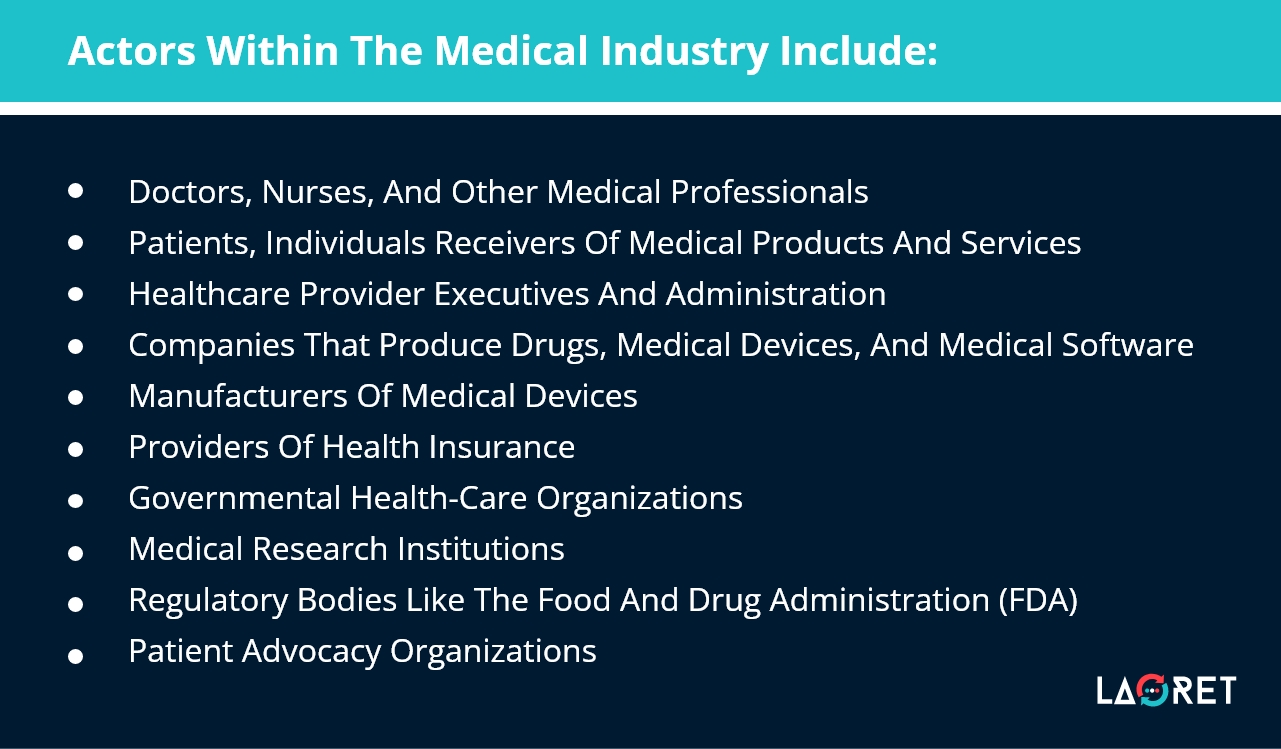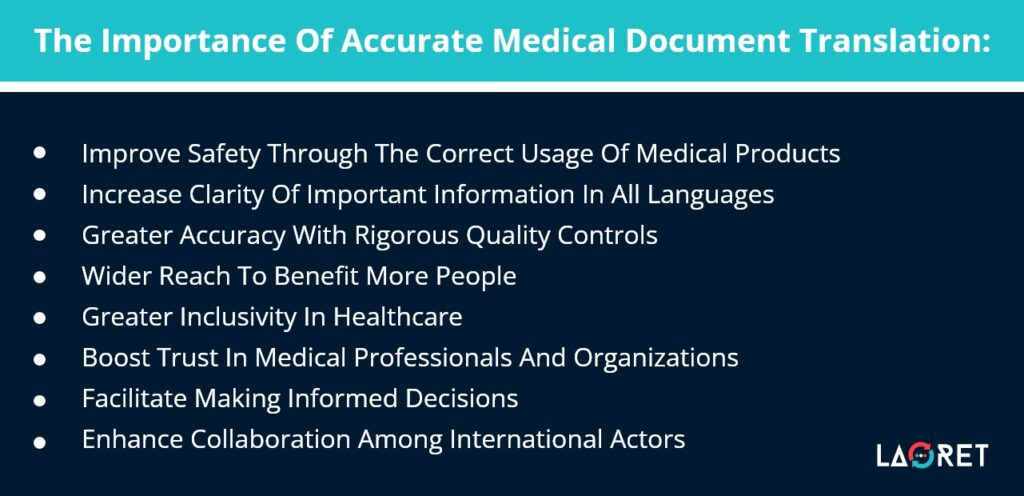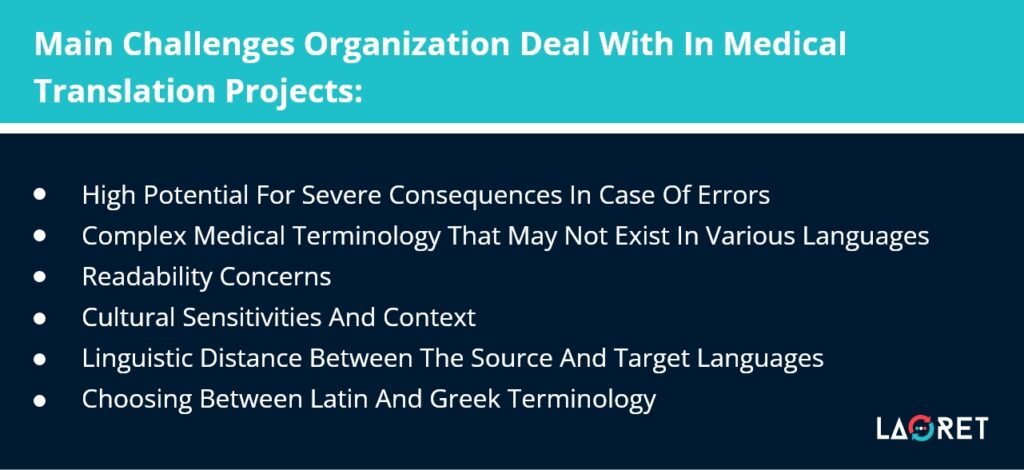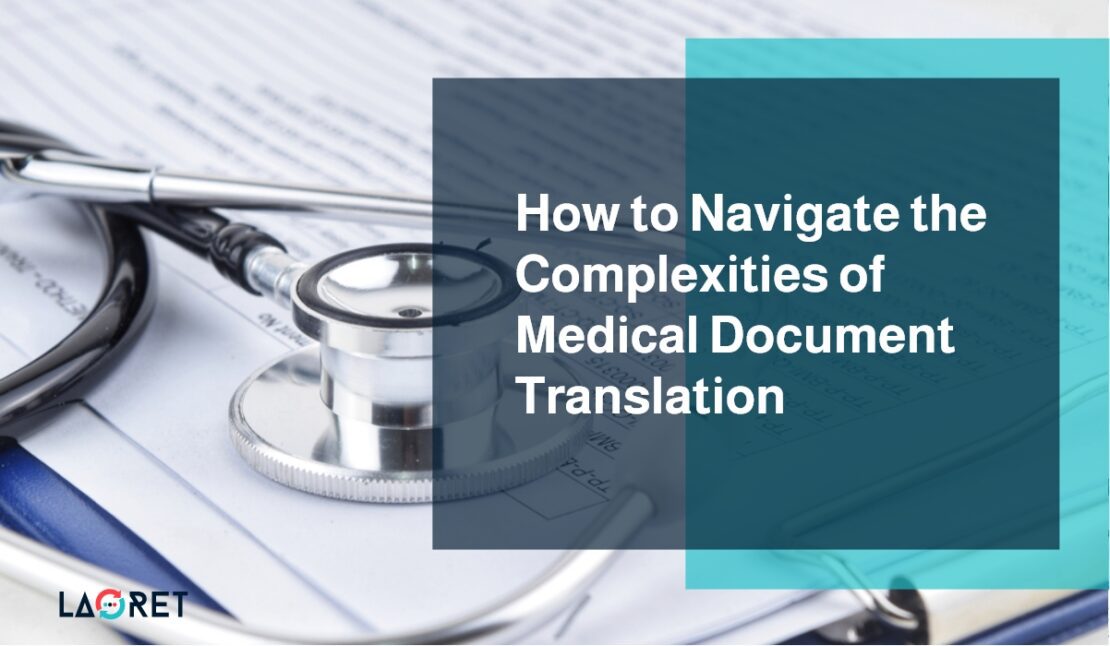How to Navigate the Complexities of Medical Document Translation
As one of the most critical technical and scientific fields, medical document translation services require the utmost accuracy, attention to detail, and precision. In this blog post, we’ll delve into the complexities of medical document translation services, examining what they entail and why precision is critical. We’ll also talk about how these services can help you, from providing better care to non-native speakers to expanding business opportunities and ultimately improving patient outcomes.
Medical Document Translation: Understanding the Scope, Actors, and Sectors Involved
It’s no surprise that the medical industry is the third most in-demand industry for professional translation services. An industry that is distinguished by a vast array of technical terminologies and high-stakes communication.
In this field, there can be no compromise when it comes to accurate translation. The industry encompasses a wide range of documents translated for various sectors that allow no room for ambiguity. Some of the most common types of medical documents fall under these categories:
- Patient Medical Records
- Medical Reports
- Informed Consent Forms
- Drug Labels
- Clinical Trial Data
- Consultation Transcripts
- Medical Device Documentation
- User Manuals
- Medication Packaging & Instructions
- Prescription Labels
- Website and Online Documentation
- Medical Research Papers
These documents serve as a means of communication between various actors, including healthcare providers, pharmaceutical companies, manufacturers, governmental regulatory bodies, and patient advocacy organizations.
This means that medical document translation requires specific knowledge and expertise in the medical field, and as such, it is essential to use professional medical translators with experience in translating medical documents.

The medical industry relies heavily on technology and that follows when translating medical documents as well. Advancements in technology, particularly translation memories, terminology management, and computer-assisted translation (CAT) tools, have greatly aided translators in tackling lengthy and complex medical texts and ensuring the utmost precision and consistency.
The Importance of Accurate Medical Document Translation
Every year, the healthcare industry becomes more international, and medical professionals increasingly need to communicate in foreign languages. According to CSA research, just in 2020, the demand for language services in the healthcare sector increased by 49%. The spike in demand came as a result of the pandemic but it continues strong in 2023 as well. And accordingly, there’s a rise in demand for multilingual document translation services.
Simply put, now more than ever, physicians and researchers want to stay up to date with what’s happening across the world, while manufacturers want to ensure that each step of medical device manufacturing is understood and safe for both employees and end users. Doctors want to get the most accurate information from their non-native-speaker patients, and regulatory bodies want to guarantee each drug that enters their national borders has clear instructions for use.
Ultimately, the goal of accurate medical translations is to enhance the quality of healthcare worldwide by providing the best products and services to improve people’s health. By ensuring the accuracy, safety, and clarity of medical documents, medical translation enhances communication, encourages collaboration, and protects against legal issues. That makes them indispensable for the advancement of the entire industry.
In other words, even if the medical organization doesn’t pretend to go global, the need to translate medical documents will sooner or later arise.
Medical documents are required to be written in the official language of many countries, thus necessitating the use of native-speaking medical translators with a deep understanding of medicine and pharmacology.
That will ensure building trust and credibility, crucial for entities looking to expand their presence in foreign markets.
The Importance of Accurate Medical Document Translation
- Improve safety through the correct usage of medical products
- Increase clarity of important information in all languages
- Greater accuracy with rigorous quality controls
- Wider reach to benefit more people
- Greater inclusivity in healthcare
- Boost trust in medical professionals and organizations
- Facilitate making informed decisions
- Enhance collaboration among international actors

Navigating the Challenges of Medical Document Translation
Compared to other projects, translating medical documents has higher stakes. Medical translators face numerous challenges, including medical terminology, equity concerns, readability, and the similarity of medical texts, as well as particular features of medical language such as term combinations, eponyms, acronyms, and abbreviations.
Some other challenges that you will face include the growing necessity to translate medical documents from one source language into multiple languages to cater to multiple actors and audiences at the same time. That also comprises adding cultural sensitivities and context based on the language and audience the document targets.
Another key consideration is the linguistic distance between the source and target languages, with greater differences making the translation more challenging. Additionally, Latin and Greek terminology continues to be widely used in medical phraseology, even though English is now the dominant language in the field.
All these challenges need to be taken into account and dealt with from the beginning. The best solution is to leave it in the hands of qualified medical translation services providers. We can’t stress it enough, medical document translation requires translators with subject-matter expertise to ensure accuracy and precision.
Something a professional medical document translator will help you with is their ability to understand the differences between documents, especially when it comes to the tone of language. They know how to address the intended audience when translating a document and use the proper translated words for them.
For instance, despite the fact that the medical field is highly specialized, the language employed can be somewhat less formal while speaking with patients than when translating medical research or content meant for industry professionals.
Main Challenges Organization Deal With In Medical Translation Projects:
- High Potential for Severe Consequences in case of errors
- Complex Medical Terminology that may not exist in various languages
- Readability Concerns
- Cultural Sensitivities and Context
- Linguistic Distance between the Source and Target Languages
- Choosing between Latin and Greek Terminology

Best Practices in Medical Document Translation Services
In the subject of professional medical translation, there should be no room for assumptions after the translation is complete. For that, medical translators follow a standardized translation process, which includes the following steps:
- Extract the medical text in the source language
- Analyze the language, tone, and style used in the source document
- Accurately translate and convey the content of the document in the target language
- Proofread the translated copy carefully and ensure that the translated document is properly punctuated and free of errors
- Perform Desktop Publishing (DTP) to accommodate the new language to the original format
- Go through a meticulous quality assurance process
- Get feedback from medical subject-matter experts
Lastly, we want to bring attention to other technological advances that medical translators are getting their hands on such as CAT tools, translation memory, and others. Features such as automated terminology checks, translation memory, and glossaries help translators work more efficiently. Translation memory, in particular, is a powerful tool that saves time and ensures consistency by automatically storing previously translated text for future use.
High-quality translated medical documents save lives as well as save you from far-reaching legal and financial consequences for your organization. And that’s what a professional, ISO-certified Language Services Provider (LSP) can offer you. Partnering with an LSP is the best choice for your medical document translation project, as they have the necessary resources to handle every aspect of the project. Additionally, LSPs can assist you in navigating the specific regulatory requirements of the medical industry in different countries and regions.
By understanding and adhering to these requirements, you can ensure that your translations are compliant with industry standards like ISO 17100. This level of compliance guarantees precise, dependable, and trustworthy translations – a vital factor in medical documents for the safety and well-being of patients.
Download our comprehensive checklist
Here’s the complete list of local and international clinical research
regulatory bodies in the world.
Conclusion
Accurate medical document translation services are crucial for the effective communication of critical health information. From patient records to hospital flyers, and medical reports, you can trust Laoret’s team of experienced medical translators and stringent quality controls to handle all the necessarymedical translation types.Our commitment to precision and technical understanding ensures that hospitals and patients have access to the most up-to-date information in their native languages. Contact us today and request a quick quote and experience what it means to work with a trusted translation agency.
References
- Statista: The world’s most spoken languages
- World Data: The world’s largest economies
- Internet world users by language
- The 10 Largest E-Commerce Markets in the World by Country
- English levels in China
- The most used languages on the internet
- China: Language simplification to increase literacy?
- The main differences between Mandarin and Cantonese
- The Spanish language in the world
- Internet world users by language
- The U.S. Has the Second-Largest Population of Spanish Speakers—How To Equip Your Brand To Serve Them
- Parker pens make you pregnant, and other due diligence fails!
- Arabic Speaking Countries
- Arab economies to post 5.4 percent growth rate this year on higher oil prices
- More Arab countries are seeking to orient their economies towards knowledge
- Individuals using the Internet (% of population) – Arab World
- French speaking countries
- English Loses Currency as Europe’s Lingua Franca After Brexit Vote
- The rise of Africa’s digital economy
- Mechanical Engineering Industry in Germany: Our Industry Report
- Internet user penetration in Germany from 2018 to 2027






